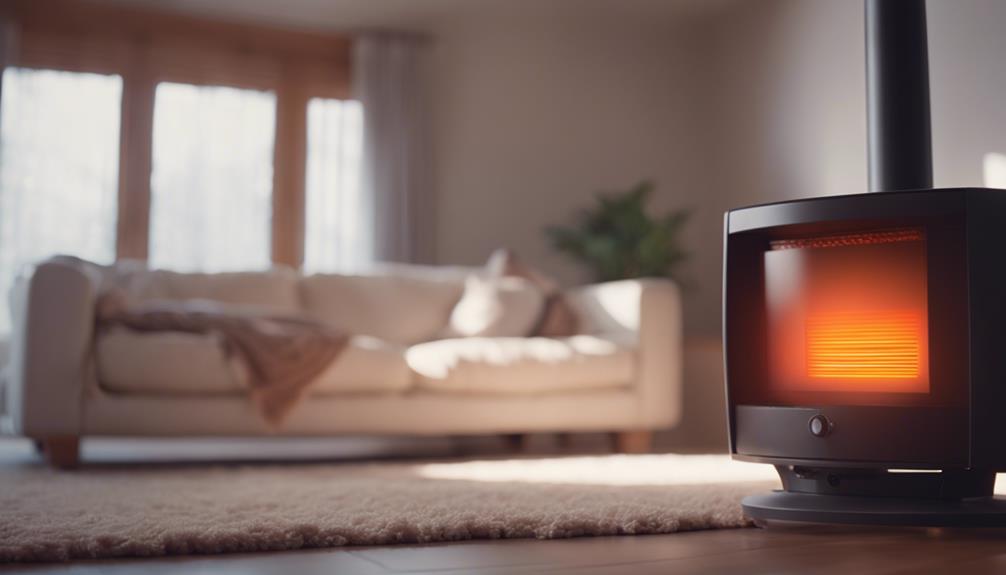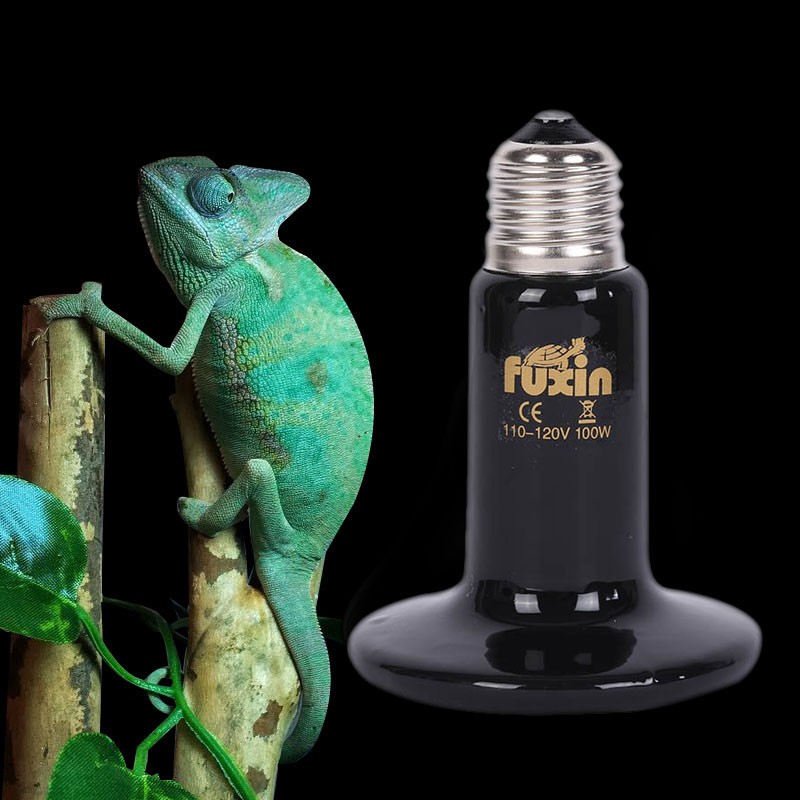
Improve your indoor air quality and respiratory health by choosing infrared heaters. Infrared heaters heat objects directly, reducing air circulation of dust and allergens. By targeting surfaces and individuals, they minimize allergens in the air and prevent dispersal of particles that trigger allergies. The gentle, consistent heat promotes better circulation, opens air passages, and reduces inflammation in the respiratory system. Maintaining ideal humidity levels and minimizing dust circulation enhances overall breathing comfort. Consider the benefits of infrared heaters for a healthier indoor environment and better breathing.
How Infrared Heaters Improve Air Quality

Infrared heaters work by efficiently heating objects in a room, which can lead to improved air quality by reducing the circulation of dust and allergens in the air. This infrared efficiency means that the heat produced directly warms surfaces and individuals in the room, rather than wasting energy by heating the air.
By targeting objects and people, infrared heaters can create a more comfortable environment while also promoting energy savings. Compared to traditional convection heating systems that rely on warming the air, infrared heaters offer a more energy-efficient solution for maintaining a comfortable temperature.
This targeted heating approach not only reduces energy consumption but also minimizes the disturbance of airborne particles like dust and allergens. As a result, infrared heaters can help create a cleaner and healthier indoor environment by lowering the circulation of these potential irritants, thereby positively impacting the overall air quality in your living space.
Reducing Allergens With Infrared Heating
By efficiently targeting surfaces and individuals in a room, infrared heaters contribute to reducing allergens and improving air quality, benefiting those sensitive to airborne particles.
Infrared heating operates by emitting electromagnetic radiation that directly heats objects and people in its path, unlike traditional heating methods that warm the air. This targeted approach not only enhances heating efficiency but also minimizes the circulation of dust, pollen, and other allergens in the air.
Allergen reduction is essential for individuals suffering from allergies or respiratory conditions, as these particles can exacerbate symptoms and lead to discomfort.
Infrared heaters help in reducing allergens by preventing the dispersal of airborne particles that commonly trigger allergies. By minimizing the movement of these allergens, infrared heating creates a cleaner and healthier indoor environment, promoting better respiratory health.
The efficient distribution of heat and the focused warmth provided by infrared heaters make them a valuable tool in reducing allergens and improving air quality in homes and workplaces.
Alleviating Respiratory Symptoms With Infrared Heat

To alleviate respiratory symptoms, infrared heat offers a targeted and effective solution for improving indoor air quality.
Infrared therapy has been shown to help with respiratory wellness by providing gentle, consistent heat that can help alleviate symptoms such as congestion, coughing, and sneezing. The heat produced by infrared heaters penetrates deep into the body, promoting better circulation and helping to relax airways, making it easier to breathe.
Infrared therapy works by emitting electromagnetic radiation that's absorbed by the skin and underlying tissues, causing a rise in body temperature. This increase in temperature can help to reduce inflammation in the respiratory system, opening up air passages and improving overall lung function.
Preventing Mold and Mildew Growth
Preventing mold and mildew growth in your indoor environment is key to maintaining a healthy living space conducive to respiratory wellness. Mold and mildew thrive in damp environments, making moisture control vital in mold prevention efforts.
By using infrared heaters, you can help prevent mold and mildew growth by effectively heating your space and reducing excess moisture in the air. Infrared heaters operate by directly heating objects and people in the room, rather than the air itself. This targeted heating approach can help keep surfaces dry and prevent the accumulation of moisture, which is essential in mold prevention.
Additionally, the gentle heat produced by infrared heaters can aid in drying out damp areas, further inhibiting mold and mildew growth. To enhance the effectiveness of mold prevention, guarantee proper ventilation in your living space, fix any leaks promptly, and maintain ideal indoor humidity levels.
Enhancing Breathing Comfort With Infrared Technology

Infrared technology can greatly enhance breathing comfort by providing efficient and targeted heat to improve air quality in your living space. Unlike traditional heating methods that simply warm the air, infrared heaters directly heat objects and individuals in the room, leading to a more comfortable environment with reduced airborne irritants. This targeted approach helps to maintain ideal humidity levels, preventing the air from becoming too dry or too damp, which can exacerbate breathing difficulties.
By using infrared technology, you can experience enhanced breathing efficiency as the gentle and even heat distribution helps to reduce the presence of allergens and pollutants in the air. This can be particularly beneficial for individuals with respiratory issues such as asthma or allergies. Additionally, infrared heaters don't rely on the circulation of air to distribute heat, minimizing the spread of dust and other particulates that can trigger respiratory problems.
Investing in an infrared heater can contribute to creating a healthier indoor environment that promotes better breathing comfort and overall well-being.
Minimizing Airborne Irritants in Your Home
Effectively reducing airborne irritants in your home can considerably improve indoor air quality and promote better respiratory health.
To achieve this, consider implementing air purification techniques such as using high-efficiency particulate air (HEPA) filters in your HVAC system or investing in standalone air purifiers. These devices can help trap dust, pollen, pet dander, and other particles that may trigger respiratory issues.
Additionally, maintaining indoor humidity levels between 30-50% can discourage the growth of mold and dust mites, common allergens that can worsen breathing conditions.
Regular cleaning of carpets, rugs, and upholstery can also help reduce the presence of airborne irritants in your home. Vacuuming with a HEPA filter vacuum cleaner and washing bedding frequently at high temperatures can further minimize allergen exposure.
Creating a Healthier Indoor Environment

Enhancing the quality of your indoor environment is vital for promoting better respiratory health and overall well-being.
Maintaining appropriate indoor humidity levels and effective temperature regulation are key factors in creating a healthier living space.
Indoor humidity levels can impact your respiratory health greatly. Insufficient humidity can lead to dry nasal passages and throat, making you more susceptible to respiratory infections. Conversely, excessive humidity creates a breeding ground for mold, dust mites, and other allergens that can exacerbate respiratory conditions like asthma.
It's recommended to keep indoor humidity levels between 30-50% to support ideal respiratory function.
Effective temperature regulation is also important for a healthy indoor environment. Extreme temperatures can trigger respiratory symptoms in individuals with conditions such as asthma or COPD.
Conclusion
Overall, choosing infrared heaters can greatly improve the air quality in your home, making it easier for you to breathe comfortably.
By reducing allergens, alleviating respiratory symptoms, preventing mold and mildew growth, and minimizing airborne irritants, infrared technology creates a healthier indoor environment.
Consider investing in an infrared heater to enjoy cleaner and fresher air, leading to better breathing and overall well-being.

